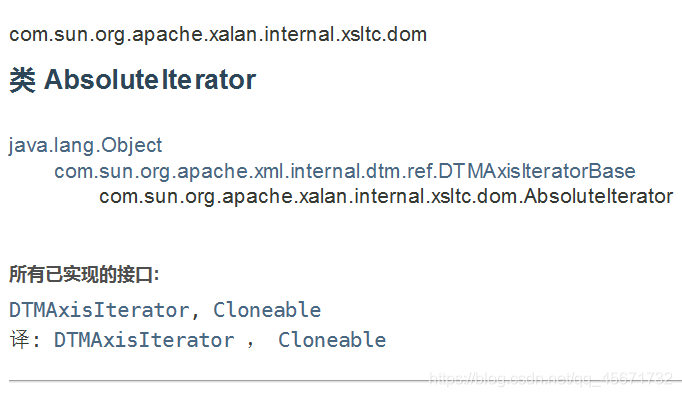Spring MVC獲取HTTP請求頭的兩種方式小結
請求是任何Web服務要關注的對象,而請求頭也是其中非常重要的信息。本文將通過代碼講解如何在Spring MVC項目中獲取請求頭的內容。主要通過兩種方式獲取:
(1)通過注解@RequestHeader獲取,需要在Controller中顯式獲取;
(2)通過RequestContextHolder獲取,可以任何地方獲取。
接下來通過代碼講解。
2 通過注解@RequestHeader獲取需要在Controller中顯示使用@RequestHeader。
2.1 獲取某個請求頭只獲取其中一個請求頭,相當容易,代碼如下:
@GetMapping('/webSite')public String webSite(@RequestHeader('webSite')String webSite) { return 'The webSite is ' + webSite;}
這里獲取的是webSite這個請求頭,測試如下:
$ curl http://localhost:8088/header/webSite -H ’webSite: www.pkslow.com’The webSite is www.pkslow.com
我們查看@RequestHeader的源碼,它還有其它屬性,如下所示:
public @interface RequestHeader { @AliasFor('name') String value() default ''; @AliasFor('value') String name() default ''; boolean required() default true; String defaultValue() default 'nttnttnue000ue001ue002nttttn';}
2.1.1 屬性required
required屬性默認為true,如果不配置而客戶端沒有傳遞該請求頭,會有報錯。如果配置為false且沒有請求頭,值為null。代碼如下:
@GetMapping('/webSite-not-required')public String webSiteNotRequired(@RequestHeader(value = 'webSite', required = false)String webSite) { return 'The webSite is ' + webSite;}
測試結果如下:
$ curl http://localhost:8088/header/webSite-not-required -H ’webSite: www.pkslow.com’The webSite is www.pkslow.com$ curl http://localhost:8088/header/webSite-not-requiredThe webSite is null
2.1.2 屬性defaultValue
defaultValue更容易理解,通過它來設置默認值。如果有傳遞則獲取客戶端傳遞的值,如果沒有傳遞為默認值。代碼如下:
@GetMapping('/webSite-defaultValue')public String webSiteDefaultValue(@RequestHeader(value = 'webSite', defaultValue = 'pkslow.com')String webSite) { return 'The webSite is ' + webSite;}
測試結果如下:
$ curl http://localhost:8088/header/webSite-defaultValue -H ’webSite: www.pkslow.com’The webSite is www.pkslow.com$ curl http://localhost:8088/header/webSite-defaultValueThe webSite is pkslow.com2.2 獲取所有請求頭
注解@RequestHeader除了可以獲取某個請求頭,還可以一次性獲取所有請求頭,這時不需要指定名字。可以通過Map、MultiValueMap和HttpHeaders來獲取所有請求頭的值,示例代碼如下:
@GetMapping('/allMap')public Map<String, String> allMap(@RequestHeader Map<String, String> headers) { return headers;}@GetMapping('/allMultiValueMap')public Map<String, String> allMultiValueMap(@RequestHeader MultiValueMap<String, String> headers) { return headers.toSingleValueMap();}@GetMapping('/allHttpHeaders')public String allHttpHeaders(@RequestHeader HttpHeaders headers) { return headers.toString();}
測試如下:
$ curl http://localhost:8088/header/allMap -H ’Authorization: Basic cGtzbG93OjEyMzQ1Ng==’ -H ’webSite: www.pkslow.com’{'host':'localhost:8088','user-agent':'curl/7.64.1','accept':'*/*','authorization':'Basic cGtzbG93OjEyMzQ1Ng==','website':'www.pkslow.com'}$ curl http://localhost:8088/header/allMultiValueMap -H ’Authorization: Basic cGtzbG93OjEyMzQ1Ng==’ -H ’webSite: www.pkslow.com’{'host':'localhost:8088','user-agent':'curl/7.64.1','accept':'*/*','authorization':'Basic cGtzbG93OjEyMzQ1Ng==','website':'www.pkslow.com'}$ curl http://localhost:8088/header/allHttpHeaders -H ’Authorization: Basic cGtzbG93OjEyMzQ1Ng==’ -H ’webSite: www.pkslow.com’[host:'localhost:8088', user-agent:'curl/7.64.1', accept:'*/*', authorization:'Basic cGtzbG93OjEyMzQ1Ng==', website:www.pkslow.com]3 通過RequestContextHolder獲取
通過RequestContextHolder來獲取則可以在其它層獲取。它先獲取Request對象,再獲取請求頭。代碼如下:
@GetMapping('/webSite-RequestContextHolder')public String webSiteRequestContextHolder() { ServletRequestAttributes requestAttributes = (ServletRequestAttributes)RequestContextHolder.getRequestAttributes(); // get the request HttpServletRequest request = requestAttributes.getRequest(); return 'The webSite is ' + request.getHeader('webSite');}
測試如下:
$ curl http://localhost:8088/header/webSite-RequestContextHolder -H ’webSite: www.pkslow.com’The webSite is www.pkslow.com4 總結
以上兩個方法,對于WebFlux而言,通過注解@RequestHeader獲取是可行的;通過RequestContextHolder獲取則不行,可參考【在Spring WebFlux的任何地方獲取Request對象】。
代碼請查看:https://github.com/LarryDpk/pkslow-samples
以上就是Spring MVC獲取HTTP請求頭的兩種方式小結的詳細內容,更多關于Spring MVC獲取HTTP請求頭的資料請關注好吧啦網其它相關文章!
相關文章:

 網公網安備
網公網安備